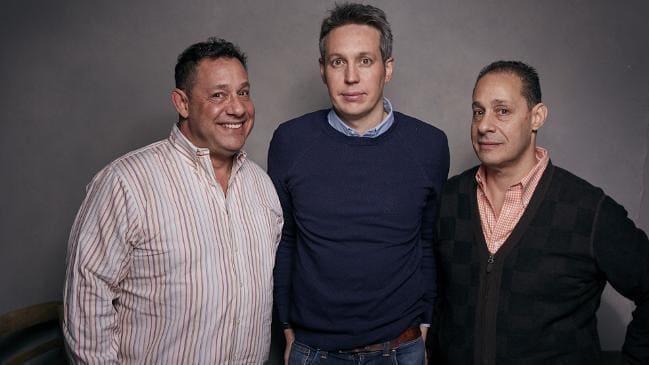THREE IDENTICAL STRANGERS, the feature debut for documentarian Tim Wardle, starts out like a feel-good video piece for The One Show (only with more style). A man named Bobby Shafran sits down in front of the camera and talks about his first day of college in 1980. He describes, with the aid of dramatic reconstruction, the bizarrely friendly and familiar welcome he gets from everybody, including hugs and kisses from complete strangers. Another young man then bounds into his dorm room and asks whether he was adopted, and on what date he was born.
It eventually comes out that Bobby has a long-lost twin brother, named Eddy Galland. When the duo unite, they are photographed for the newspapers… and a third man, David Kellman, recognises the two faces as his own. They are not twins but triplets, all separated at birth and adopted by different families of different social classes, yet all raised within 100 miles of each other.
This alone is an astonishing story, but an upbeat one. The testimonials feel like you’re in these people’s houses or at the bar with them. They’re funny and authentic – a little rough around the edges maybe (Bobby refers to his first car as “the old bitch”) but ultimately charming. The editing is slick and Paul Saunderson’s playful soundtrack is reminiscent of Thomas Newman’s music for films like ERIN BROCKOVICH or even FINDING NEMO. As the triplets become minor celebrities, appearing on chat shows and cameoing alongside Madonna in DESPERATELY SEEKING SUSAN, the film is a surreal, delightful trip.
That’s the first act. The rest of the story is even more surprising and much, much darker. The old Mark Twain maxim of “truth is stranger than fiction” has never been more apt. There are secrets behind the separation of the triplets, and plot twists the likes of which screenwriters wish they could come up with. At one point, someone refers to the deepening mystery as “Nazi shit”. It’s as much the stuff of Nazis as it is the stuff of TV’s ORPHAN BLACK.
From this point on in the narrative, the tone and themes of the film are considerably more unsettling. There are discussions of identity and “nature vs. nurture” that are gobsmackingly thought-provoking. Cleverly, the film presents all sides of the argument, and never quite defines any one theory as absolute truth. The story by itself would captivate and shock any audience, but the documentary’s construction matches the quality of its source material. This is a properly cinematic piece of work and well worth going to see on the big screen.

